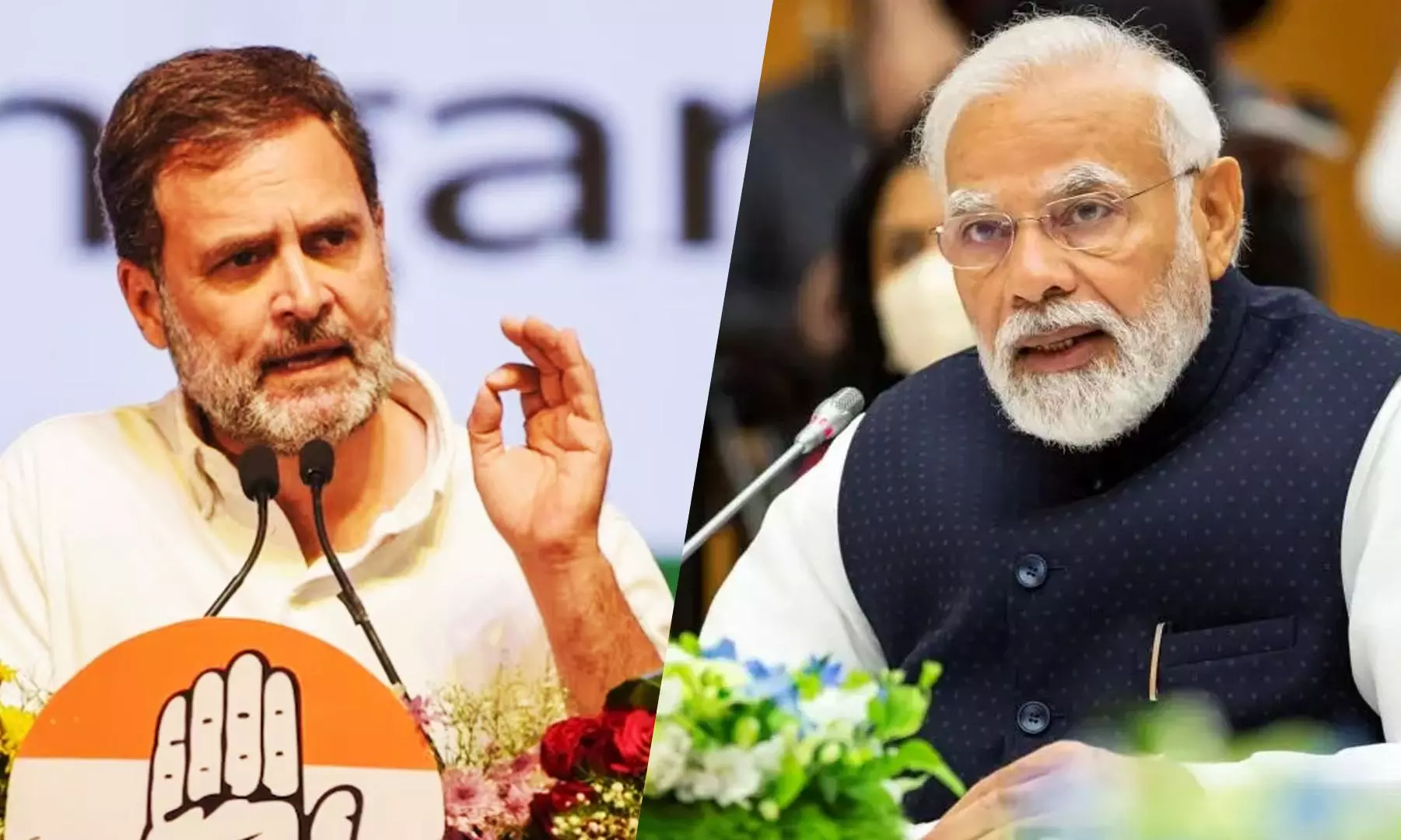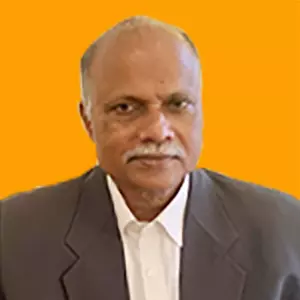
- Home
- India
- World
- Premium
- THE FEDERAL SPECIAL
- Analysis
- States
- Perspective
- Videos
- Sports
- Education
- Entertainment
- Elections
- Features
- Health
- Business
- Series
- In memoriam: Sheikh Mujibur Rahman
- Bishnoi's Men
- NEET TANGLE
- Economy Series
- Earth Day
- Kashmir’s Frozen Turbulence
- India@75
- The legend of Ramjanmabhoomi
- Liberalisation@30
- How to tame a dragon
- Celebrating biodiversity
- Farm Matters
- 50 days of solitude
- Bringing Migrants Home
- Budget 2020
- Jharkhand Votes
- The Federal Investigates
- The Federal Impact
- Vanishing Sand
- Gandhi @ 150
- Andhra Today
- Field report
- Operation Gulmarg
- Pandemic @1 Mn in India
- The Federal Year-End
- The Zero Year
- Science
- Brand studio
- Newsletter
- Elections 2024
- Events
- Home
- IndiaIndia
- World
- Analysis
- StatesStates
- PerspectivePerspective
- VideosVideos
- Sports
- Education
- Entertainment
- ElectionsElections
- Features
- Health
- BusinessBusiness
- Premium
- Loading...
Premium - Events

Ever since Modi turned on the spout of political vitriol, Rahul Gandhi’s talk of the politics of love and affection has started to make urgent sense
It was not so long ago when it was conventional wisdom among journalists that the BJP and its supremo Narendra Modi really wanted Rahul Gandhi as the leader of the Opposition. Modi clearly relished having Rahul Gandhi as his foil, punching bag, emblem of effete haplessness and putative pointlessness of resisting the BJP’s relentless advance.
The tables have turned. Rahul Gandhi’s talk of Mohabbat ki Dukan, a shop selling love, had originally looked simply like quaint whimsy. Until Narendra Modi decided to give Mohabbat ki Dukan a large number of eager customers by turning on a tirade of vitriol not just against Rahul Gandhi but also against the Muslim minority, all political opponents, and political decency. The more Modi speaks in this vein, the more Rahul Gandhi seems to make sense.
Perfect opponent
Rahul Gandhi served as the perfect political opponent for Narendra Modi. He is the product of dynastic politics, born to privilege, his supporters waiting for his reluctance to take on the responsibility of leading India’s oldest political party to dissipate and give way to weary readiness to bite the bullet, swallow “the poison pill of power” and take charge.
Modi, in contrast, is a leader who has spent a lifetime in the political trenches, working for the mother organization of the BJP, the Rashtriya Swayamsevak Sangh, which has been active ever since its founding in 1925, to subvert the idea of a multicultural nation, in which citizenship is not linked to religion, to topple the inclusive Idea of India that the freedom movement had forged and Nehru, as prime minister, tried to realise after Independence.
The RSS was active in the anti-cow slaughter agitations in the 1960s, the Navnirman Movement against corruption in Gujarat, in the JP movement across North India, in the resistance to the Emergency, in the Janata Party government, in the Assam agitation, whose ugliest episode was the Nellie massacre of some 2,000 Muslim villagers, in the Ram Janmabhoomi campaign to knock down the Babri mosque at Ayodhya, in the campaign to label Rajiv Gandhi a chor (thief), using the Bofors scandal, in the installation of the VP Singh government, in orchestrating Advani’s Rath Yatra and collection of consecrated bricks from across the land to build the promised temple for Ram, a move that reflected the brilliance of Gandhi’s use of spinning yarn at home to elicit mass participation in a big political project at low personal cost, in exposing Congress dither on separatism and Islamist radicalism in Kashmir, in mobilizing support for the India Against Corruption campaign against the so-called scams of the United Progressive Alliance government.
'Batttle-hardened, street smart'
Modi might not have contested elections before being appointed as chief minister of Gujarat in 2002, but he had, as an RSS functionary, played a part in all the RSS-inspired political movements of his adult life. He emerged battle-hardened and street-smart.
The long list of non-Gandhis
The Congress, too, had its fair share of leaders who had become leaders the hard way, by actually leading other people onto and along the path of politics. From Pranab Mukherjee, Digvijaya Singh, Arjun Singh, Ghulam Nabi Azad and Gehlot to Ahmed Patel, AK Antony, Anand Sharma, and Ambika Soni, the Congress had an array of leaders who came up through the hardscrabble of political action in their home states. However, the party chose Rajiv Gandhi’s widow as party president after Sitaram Kesri revealed his incompetence as party president. She, in turn, wanted to pass on the baton to her son.
Rahul Gandhi disdained to take on any administrative responsibility during two terms of the UPA government, spoke inane nonsense in Parliament and went on intermittent pilgrimages to the hinterland on his own personal journeys of discovery of India, and on impulsive excursions abroad. He distrusts experienced leaders and relies on fellow dynasts, several of whom have deserted the Congress and joined the BJP – Jyotiraditya Scindia, Milind Deora and Jitin Prasada. He was willing to remove veteran loyalist Ashok Gehlot as chief minister of Rajasthan, to accommodate his chum and almost-defector Sachin Pilot. He has surrounded himself with people who have no political base of their own and cannot win elections without relying on the assistance of popular leaders.
Modi is an eloquent speaker, someone who knows what buttons to press when addressing what kind of audience. He is a relentless campaigner, aware that every utterance of his, every public action of his, is watched and interpreted by opponents and supporters alike. Rahul Gandhi appears a novice in front of him, speaking a lingo that is functional, but bereft of the emotive power available only from the ammunition strewn across the armoury of the cultural universe associated with the language.
After concluding his Kanyakumari to Kashmir trek, Rahul took a short vacation, along with his mother and sister, and played with snow in the sunny vales of the state, had these happy moments photographed and printed in newspapers. The BJP pounced, with glee, tweeting the photograph to claim how its administration of tough love allows mothers and their children to have safe, happy holidays in Kashmir.
Rahul Gandhi, just by being Rahul Gandhi, underlined Modi’s leadership strengths, and condemned the dynastic privilege bequeathed to epigones. It made sense for Modi to hold on to Rahul Gandhi as his lucky mascot, representing the alternative to his own glorious self.
Rahul Gandhi then hit upon this narrative of love vs hatred, how he and the Congress stand for love and affection, while Modi and the BJP stand for hatred and disruption. This was received as being par for the course in political campaigns, till Narendra Modi started spewing hatred in his campaign speeches.
Spewing hatred
He began by distorting the Congress manifesto, first describing it as bearing the imprint of the Muslim League, the inference being that it seeks to break India up. Only in Kerala, where the Muslim League has been functioning for decades as a party that works for the community without being in opposition to the majority community, do people understand that this League has little in common with Jinnah’s League. Modi repeatedly portrayed the Congress as the party favoured by Pakistan.
Modi distorted the Congress manifesto to say that the party, if it comes to power, would grab the mangalsutra, the token of marriage worn by Hindu women, made of gold by anyone who can afford it, and gift it to Muslims. In this same speech, Modi described Muslims as infiltrators, and those who have more children.
This show of animosity towards the Muslims has been echoed by other BJP leaders, amplified by the BJP’s social media, Meta, the parent company of Facebook, Instagram and WhatsApp, even taking down some nasty videos. Modi has attacked a venerable leader like Sharad Pawar, who is almost a folk hero in Maharashtra, above party politics.
Gush of fresh air
In this atmosphere of concerted toxicity, Rahul Gandhi, with all his shortcomings, comes across as a refreshing gush of fresh air. Does the average Indian like his politics nasty and brutish? Who speaks the language of hatred, and who stands to oppose it?
The more Modi attacks the Muslim community and Rahul Gandhi in his campaign speeches, the more Rahul Gandhi’s claims about the BJP and what it stands for ring true. Those who have allowed the dazzle of Modi’s development rhetoric to gloss over the link between his election-time attacks on the religious minorities now have clarity of vision. They can see the atrocities in Manipur, the random attacks on Muslim men to the accompaniment of Jai Sri Ram chants, the love-jihad misuse of state power, the arbitrary arrests and incarceration in the name of national security, the bulldozing of Muslims’ property, the lynchings in the name of the cow, the cruel treatment of migrant workers during Covid, the honouring of convicted rapists and killers on parole and early release, the callous disregard for public wellbeing behind the mindless policy of Demonetisation, continued political patronage of the Wrestling Federation chief even after medal-winning women wrestlers accused him of sexual harassment, the misuse of the Enforcement Directorate and the CBI to hound Opposition leaders, the facilitation of arbitrary displacement of Adivasis from their tribal homes in the name of Development, the mainstreaming of a political discourse that casts Muslims as Pakistanis, as a continuum of hate flowing from Modi’s leadership.
There is also a dialectic of power at play here: the more powerful Modi projects himself to be, the less tenable any claim of helplessness to stop the atrocities being carried out in the name of Modi’s politics by Modi-appointee chief ministers and Modi bhakts across the land.
The antidote to hate intuitively appears to be love, which is espoused consistently by Rahul Gandhi. Rahul Gandhi does not have a better ally than Modi, who has singlehandedly gifted him and his political platform of Mohabbat the political salience they had lacked.


